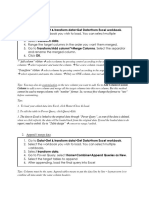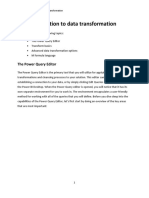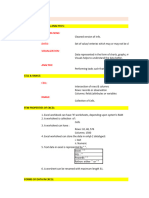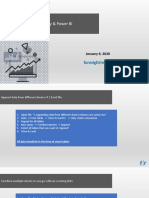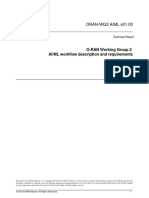0% found this document useful (0 votes)
58 views22 pagesPower Query ETL Guide for Power BI
Power Query is an ETL tool in Power BI used to extract data from various sources, transform the data as per reporting needs, and load the data into Power Pivot. The document describes the user interface of Power Query and various transformations that can be performed like filtering, column operations, row operations, and joining queries.
Uploaded by
Nagabushi PavaniCopyright
© © All Rights Reserved
We take content rights seriously. If you suspect this is your content, claim it here.
Available Formats
Download as DOCX, PDF, TXT or read online on Scribd
0% found this document useful (0 votes)
58 views22 pagesPower Query ETL Guide for Power BI
Power Query is an ETL tool in Power BI used to extract data from various sources, transform the data as per reporting needs, and load the data into Power Pivot. The document describes the user interface of Power Query and various transformations that can be performed like filtering, column operations, row operations, and joining queries.
Uploaded by
Nagabushi PavaniCopyright
© © All Rights Reserved
We take content rights seriously. If you suspect this is your content, claim it here.
Available Formats
Download as DOCX, PDF, TXT or read online on Scribd
/ 22























